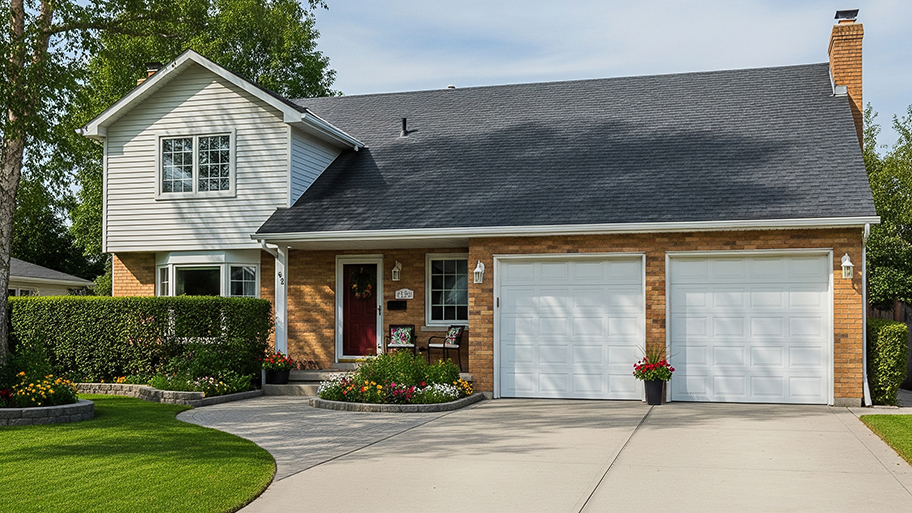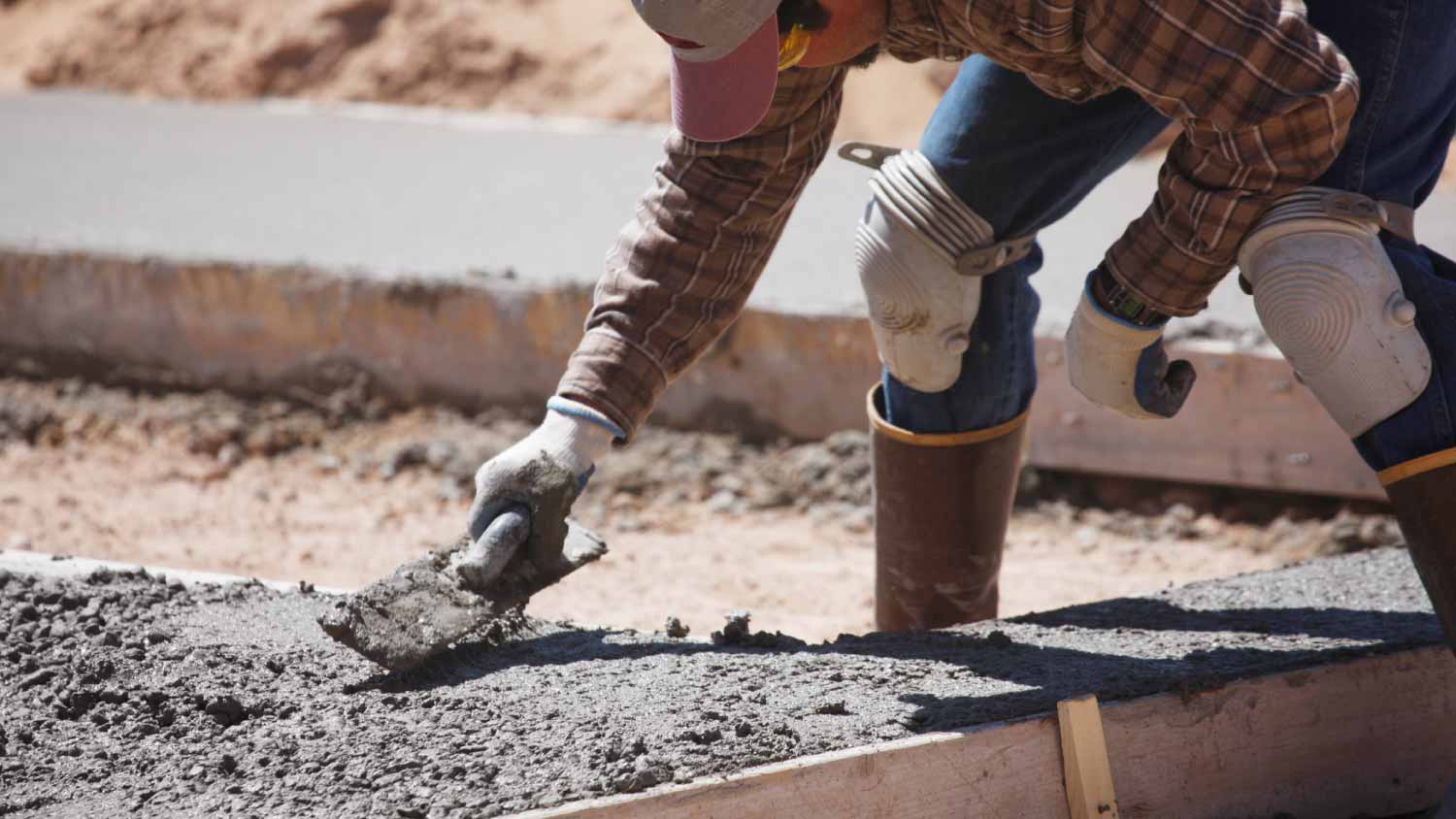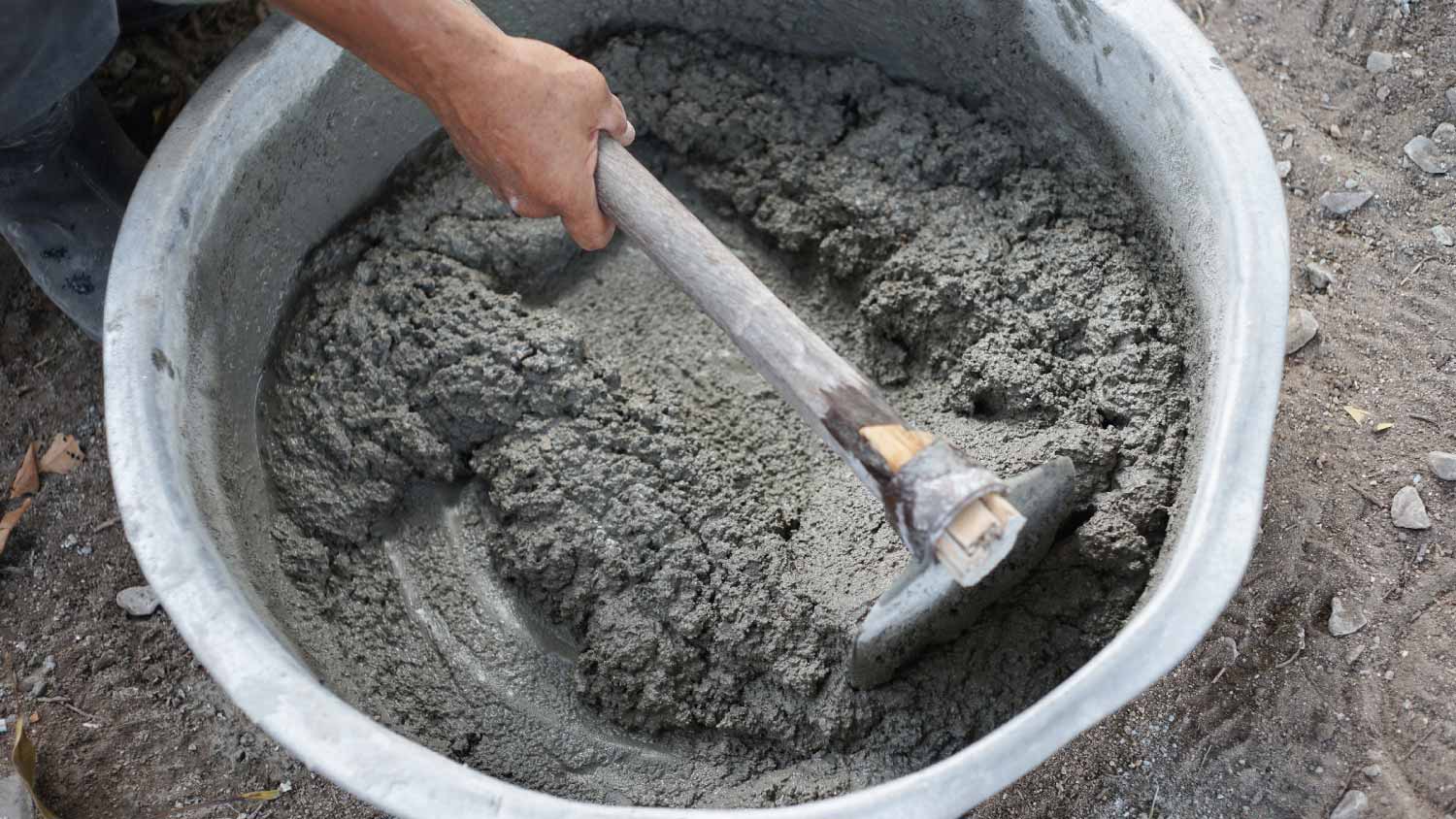
Concrete driveways stand up to a lot of pressure over the years. How much do concrete driveway repairs cost when it's time to give it a little TLC?
Dry pour for ease of installation, wet pour for durability and strength


Dry pour concrete is faster and easier, but the concrete won’t be as strong and isn’t suitable for bearing loads.
Wet pour concrete is always stronger and more durable, and you’ll have more customization options.
Dry pour concrete may be suitable for small concrete garden steps or fence post installation, but it’s not ideal for slabs.
Working with concrete can be intimidating for DIYers—getting the right mixture consistency, removing air bubbles, and maintaining proper moisture levels for ideal curing can be a challenge. You may be wondering if dry pour concrete is a viable alternative, as it makes the application process much simpler. In this guide, we’ll explain the differences between dry pour concrete and wet pour concrete and when each option could be a viable solution for your project.

The primary difference between dry pour concrete and wet pour concrete is, of course, the application process. With dry pour concrete, you pour dry concrete into your form and then wet it over the following few hours to maintain good moisture and let it cure. With wet pour concrete, you mix water into the concrete and then pour the wet mixture into your concrete form. There are also some other key differences to note, including strength, durability, and customization options.
| Feature | Dry Pour Concrete | Wet Pour Concrete |
|---|---|---|
| Installation | Very easy | More challenging |
| Strength | Low to moderate | Very high |
| Durability | Low to moderate | Very high |
| Lifespan | 10–15 years | 30 years+ |
| Stainable | No | Yes |
| Custom finishes | No | Yes |

Before you decide which route to go for your concrete project, be sure to consider all of the following factors and choose the concrete pouring method that works best for your particular project.
There’s no debate: dry pour concrete is easier to install. Not only do you need fewer tools—you’ll just need a garden hose to wet the dry concrete, whereas you’d need a concrete mixer or a wheelbarrow and shovel for wet pour concrete—but you won’t have any mixing to do.
With dry pour concrete, you simply add a substrate, like gravel or sand, lay down the concrete in your form, smooth it out, and spray it with water to hydrate it and begin the curing process. Wet pour concrete demands more accurate mixing to get the right consistency, pouring, agitating the concrete in the mold to remove air pockets, and then smoothing out the surface.
Another option to consider is using precast concrete, which doesn’t require any mixing on your part and will last longer than dry pour concrete.
While dry pour concrete is undoubtedly easier to install, it comes at a price: reduced strength. Concrete is one of the strongest and most durable building materials, and it gets its strength both from an accurate mixture of concrete and water and from the curing process.
Since there’s no mixing with dry pour concrete, you can never be sure you have the proper consistency for strength. The curing process is also less precise, so you’re more likely to get pockets of concrete that don’t receive the right amount of water and never cure fully, even if you pour concrete at the right time and in the right conditions.
Ultimately, you should never use the dry pour method for any concrete that will bear weight, like shed foundations, slabs for mounting HVAC equipment, sidewalks, or driveways. For the best results, you should hire a local concrete driveway company for exterior surfaces that will need to bear heavy loads.
With decreased strength comes decreased longevity. Dry pour concrete projects are likely only to last for 10 to 15 years and even less if you pour your concrete in cold weather or live in a cold climate that will put added strain on the concrete. Wet pour concrete projects can easily last for 30 years or more and stand up better to cold. Proper care could extend the lifespan to more than 50 years, even when your concrete is exposed to the elements.
Dry pour concrete is a common option for certain concrete projects that don’t require a lot of strength, like decorative concrete walkway steps and setting fence posts. For most other projects, wet pour concrete is a better option. Wet pour is the preferred method for walkways, patios, pool decks, sidewalks, and driveways. Due to the reduced strength, professionals will never use dry pour concrete for foundations, even for small outbuildings like sheds.
Finally, wet pour concrete gives you more customization options. You can stain wet pour concrete and get a uniform color during the mixing process, whereas it’s not possible to get that same uniformity in dry pour concrete. Concrete finishes vary among the different methods, as well. For dry pour concrete, you can really only opt for a broom finish or trowel finish. With wet pour, you can upgrade to stamped concrete for more options.
From average costs to expert advice, get all the answers you need to get your job done.

Concrete driveways stand up to a lot of pressure over the years. How much do concrete driveway repairs cost when it's time to give it a little TLC?

Whether you’re planning on putting in a concrete driveway, patio, or staircase, use this concrete delivery cost guide to get an accurate estimate.
Need to breathe new life into your exterior stoop? Use this guide on concrete step repair cost to see the price of a professional repair.

Concrete may be strong, but it's surprisingly sensitive to extreme temperatures. Here's what to know about pouring concrete in cold weather.

Not sure what type of concrete is best for your project? Learn about the differences between fiber concrete versus rebar-reinforced to get started.

Learn about how thick a concrete driveway should be and what factors affect the thickness before pouring concrete to ensure safety and durability.